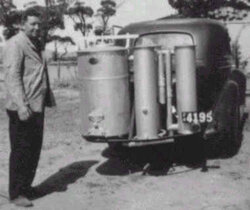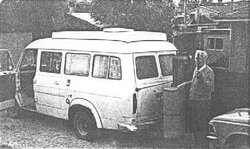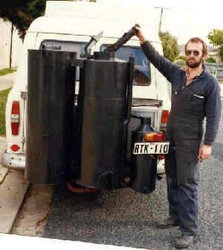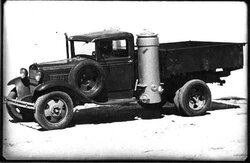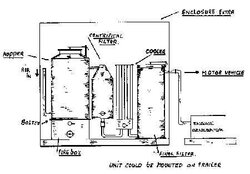jdemaris
New Member
Eric Johnson said:Given that most people probably violate the terms of most warranties at some point, I think it comes down to the manufacturer's discretion anyway, at least with low-volume products like boilers and furnaces. Within that context, it's probably not that hard to declare a warranty void and abandon the customer.
A few more comments on warranties for furnaces and other items. I'm sure many people are aware of this, but I know some are not. My comments are not targeted towards any specific brand.
Most furnace warranties that I've had to deal with, were useless as far as the primary seller was concerned (company warranty). There may be exceptions out there somewhere, but for all I've seen, it generally goes like this. If there is a heavy hard-parts failure, e.g. firebox, heat exchanger, etc. , no labor charges, and no shipping-back-to-the-factory fees are covered. In addition, most companies do not allow anyone to repair the furnace unless authorized by them. That pretty much nullifies that warranty for most people.
Here's one example I had to deal with recently. Oneida-Royal oil hot-air furnace. Comes with a "lifetime warranty" on the heat exchanger. Customer never bothered to read the small print. After two winters, it was putting CO into the house and had a hole burnt through the heat exchanger. So, he called me. I came and looked at it and found the hole. The furnace had an ultra cheap heat exchanger protected by a cheap refractory blanket. The blanket fell apart, and as soon as it did, the furnace gun burnt a hole right through the thin exchanger. I called the company. Here is how they handled it. They told me that first the customer could not just use just any furnace repairman. We had to use a Oneida-Royal certified repairman. There were none within a 60 mile radius of us. So, I called the dealer and complained. and we finally made a conference phone call to the company. Finally got "special permission" to have me remove the furnace, take it apart as much as possible, and pay all shipping charges to send it to the other side of the country. Then, their warranty department would look at it and determine if they're going to cover it or not. Keep in mind, just getting to that point would of cost the customer about $600, out of pocket and never refundable. The complete furnace only cost $950 new. They went on to tell me that, if they discovered that the refractory blanket had failed, and that's why the heat exchanger burnt out - there would be no warranty. Well, duh . . . That's exactly what happened. But, they claimed that the refractory blanket is considered an expendable wear item and is NOT warranteed, and is NOT considered defective when it falls apart.
So, I put a patch in the heat exchanger, built a refractory chamber out of firebrick and replaced with new the next summer. That "lifetime warranty" was worse than useless.
My point here is, the dealer is what can make or break a good buy. For me, I don't pay any attention to warrantees. I'd rather figure what specs I want in a product, and go out and find one. That is why, when I was looking for a new, large, wood furnace, I bought the Meyers. I consider it a lifetime investment - and with that mindset, I wouldn't accept a firebox with metal any thinner than 4 gauge (around 1/4"). 30 - 40 years ago, that was the minimum standard used by most major wood and coal furnaces, and better yet a stainless steel or cast iron baffle was used in the hottest sections.
There probably are some very good dealers out there that go the extra mile for customers. Just don't assume they all do. When I worked for a Thermo-Control dealer in the 1970s, I had to go out and do many in-home welding repairs for burnt-out baffles and secondary chambers. We covered most of the cost of those repairs and usually, we got reimbursed by the company - but - the company went out of business.
It's not just about furnaces either. Every buy a "lifetime warranty" exhaust system or brakes for your car or truck? Many companies now void those warrantees because it became too costly when people kept their vehicles too long. That includes NAPA and Advance Auto. They now get around it by claiming when those parts rust out, burn out, or wear out - it is NORMAL and not due to a defect.
Also with batteries. Particularly with the solar-electric industry and government incentive programs. When I installed my solar electric system, the state of NY tried to force me to use Canadian batteries made by Rolls-Surette. Why? They were the only battery on the market with a full, not pro-rated 5 year warranty. Problem was and is - they are in Canada with warehouses far from me. If there was any sort of warranty claim, I was required to pay all shipping charges, both ways. Made that warranty pretty much useless. If there has been a local dealer that stocked them, it would of been different.


